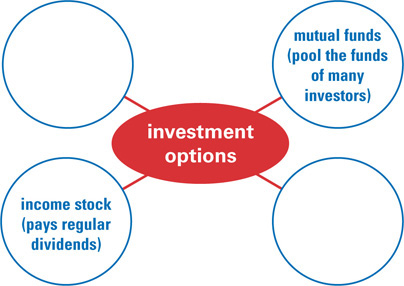Chapter 11 Assessment
Chapter Summary
A summary of major ideas in Chapter 11 appears below. See also the Guide to the Essentials of Economics, which provides additional review and test practice of key concepts in Chapter 11.
-
Section 1 Saving and Investing (pp. 271–275)
Saving and investment are essential parts of the American free enterprise system. In our financial system, institutions called financial intermediaries bring together savers and borrowers to channel funds for investment. Investors must weigh potential risks and returns when choosing among the many types of investments available.
-
Section 2 Bonds and Other Financial Assets (pp. 277–283)
Businesses and governments issue bonds and other financial assets in order to finance expansion. Bonds are relatively low-risk investments for purchasers, who generally receive the purchase price of the bond plus interest when the bond matures. Other financial assets, such as money market mutual funds and certificates of deposit, offer additional investment opportunities.
-
Section 3 The Stock Market (pp. 285–292)
The stock market is another way for people to invest their earnings. Stocks offer possibilities for high return, but also present certain risks. Major stock exchanges in the United States include the New York Stock Exchange and the Nasdaq, an electronic stock exchange. Stock performance is measured by The Dow and the S & P 500. The Great Crash of 1929 dealt the stock market one of its worst economic blows in our history. Following a period of distrust of the stock market in the decades after the Crash, however, investors returned to the stock market in great numbers.
Key Terms
Match the following terms with the definitions listed below. You will not use all of the terms.
- brokerage firm
- junk bonds
- bull market
- coupon rate
- investment
- speculation
- portfolio
- financial intermediary
- maturity
- diversification
- capital gain
- Spreading out your investments to reduce risk
- Difference between a higher selling price and a lower purchase price
- The interest rate to be paid to the bondholder
- A period of time during which the stock market steadily rises
- An action taken today that will create benefits in the future
- Institution that helps channel funds from savers to investors
- Lower-rated, higher-paying bonds
- The practice of making high-risk investments in hopes of getting a big return
- Collection of financial assets
Using Graphic Organizers
-
On a separate sheet of paper, copy the web map below. Complete the web map by writing and describing examples of investment options in the circles. More circles may be added.





